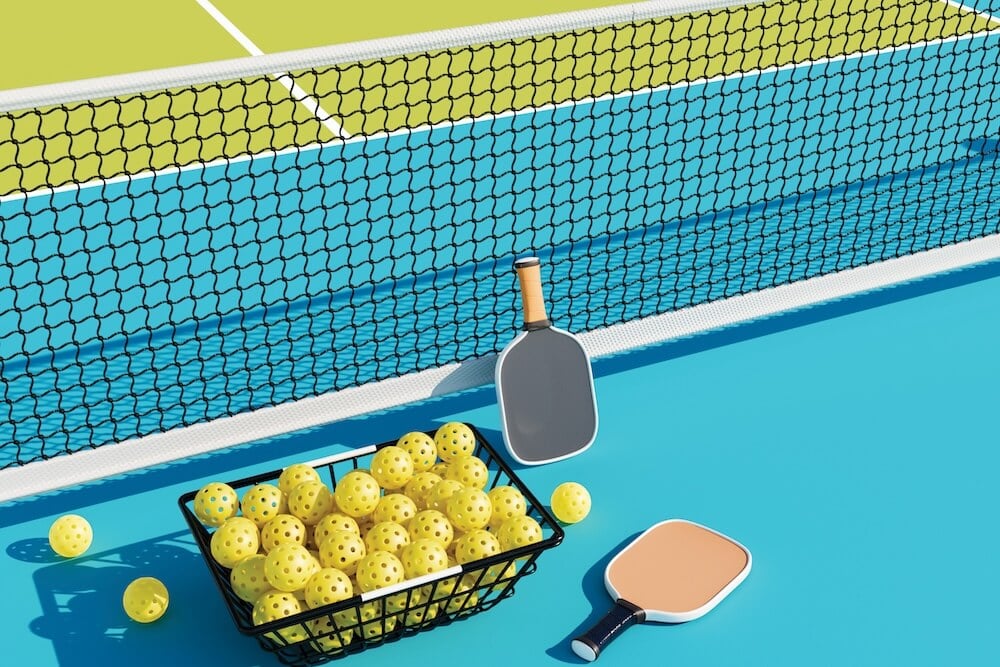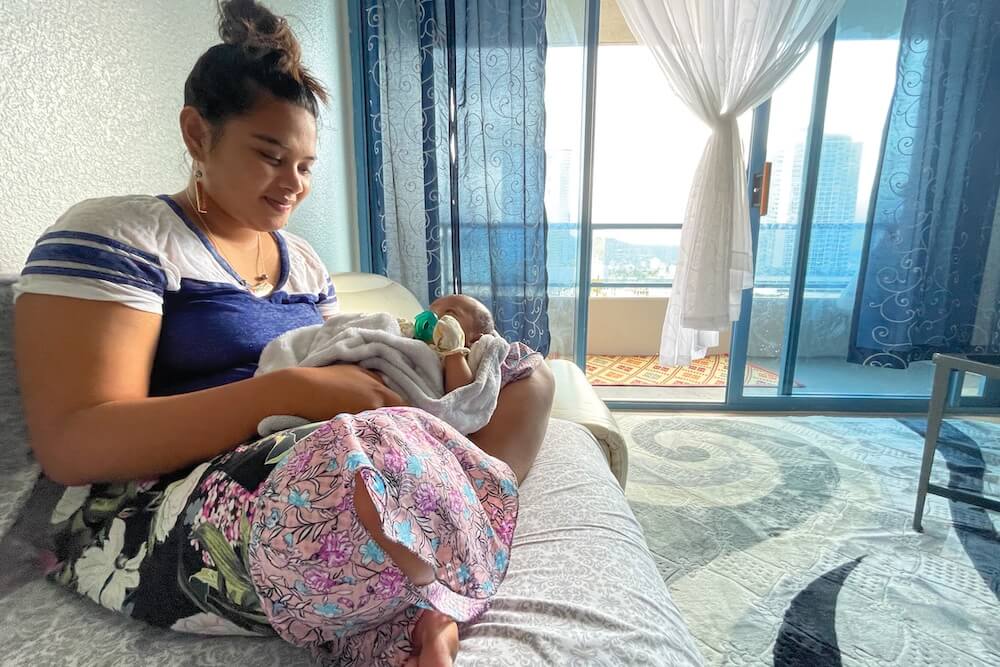Aloha Medical Mission Heals the Poor in the Philippines
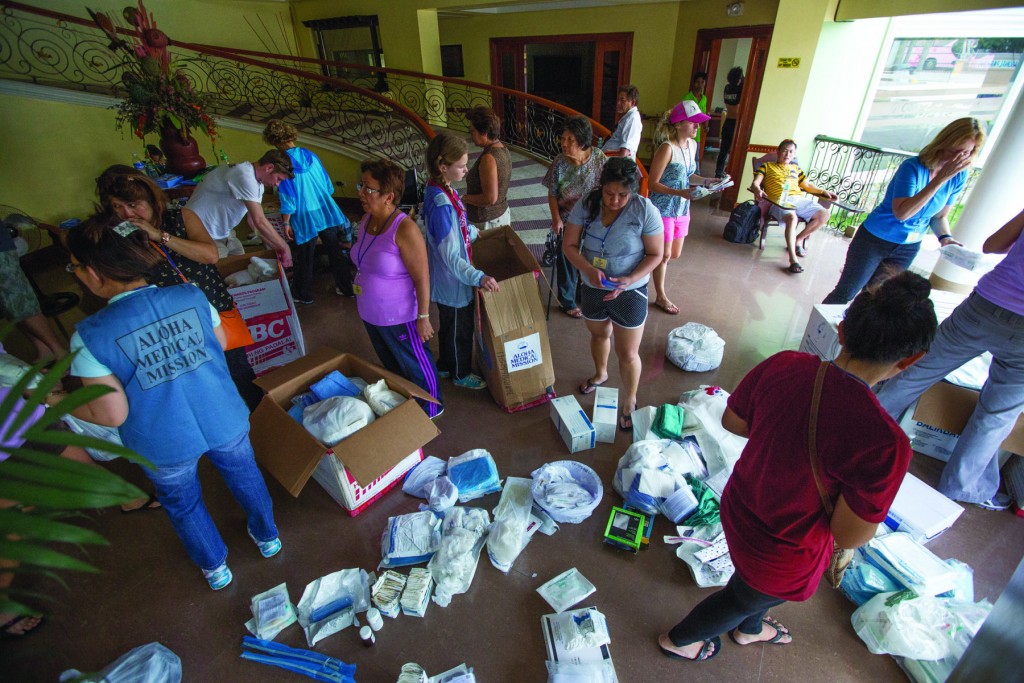
For a week in February, a team of 28 volunteers helped heal some of the poorest people in Tuguegarao and the surrounding region of the Philippines. The visitors from Hawaii’s Aloha Medical Mission and their local partners saw 1,300 patients, performed 22 major surgeries and 67 minor ones, conducted 275 dental extractions, and dispensed drugs and medical advice to those who could not afford healthcare.
Everyone on the mission paid their own way, including airfare, hotel and food – almost $2,000 each. Hawaii Business staff photographer David Croxford accompanied them, as did UH-Manoa journalism students Deborah Manog and Bobby Bergonio, whose trips were funded by scholarships. This is the story of that mission.
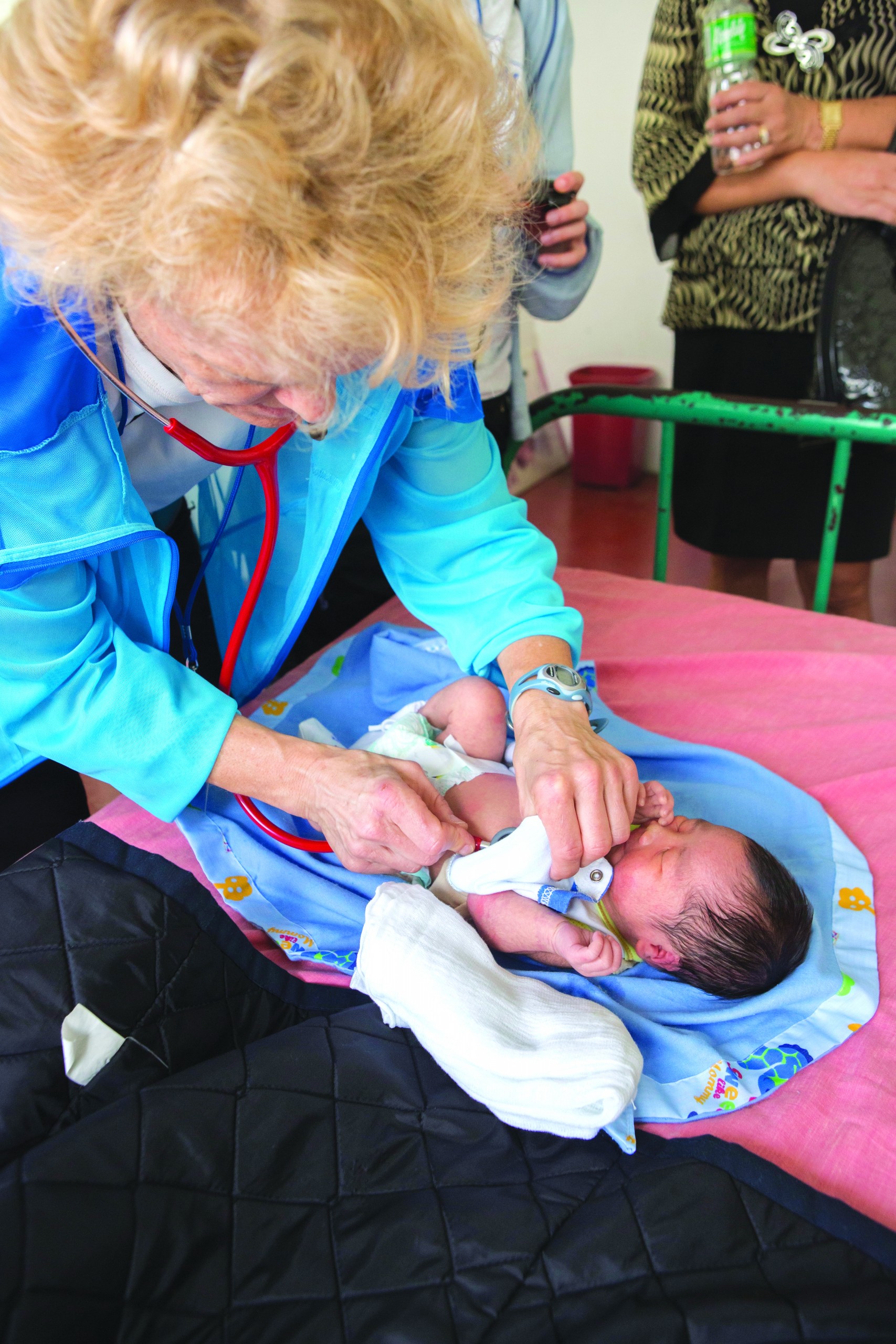
Tuguegarao is the capital of Cagayan, one of the northern-most provinces in the Philippines. The city of about 140,000 people is a bustling regional hub with streets dominated by a huge population of motorized tricycles, which can carry up to five people at a time. Though the city has several hospitals and healthcare is cheap by U.S. standards, the average Tuguegarao resident makes about 200 pesos a day, less than $5 U.S., so even serious illnesses and injuries are often left untreated. That’s why the volunteers of the Aloha Medical Mission came.

Word had spread that the Aloha Medical Mission was coming, so before dawn on the first day of treatment, hundreds of people were crowded outside the parish hall of St. Peter’s Cathedral. Among them was Krisensha Ramos, a 28-year-old housemaid from the town of Iguig, who is married with four daughters. Ramos had a golf-ball-size lipoma, a benign tumor of fatty tissue, for seven years. Located just behind her left shoulder, it caused pain whenever the weather turned cold. Surgery to remove it would have cost 12,000 pesos or roughly $270 – an impossible price for her and her family.
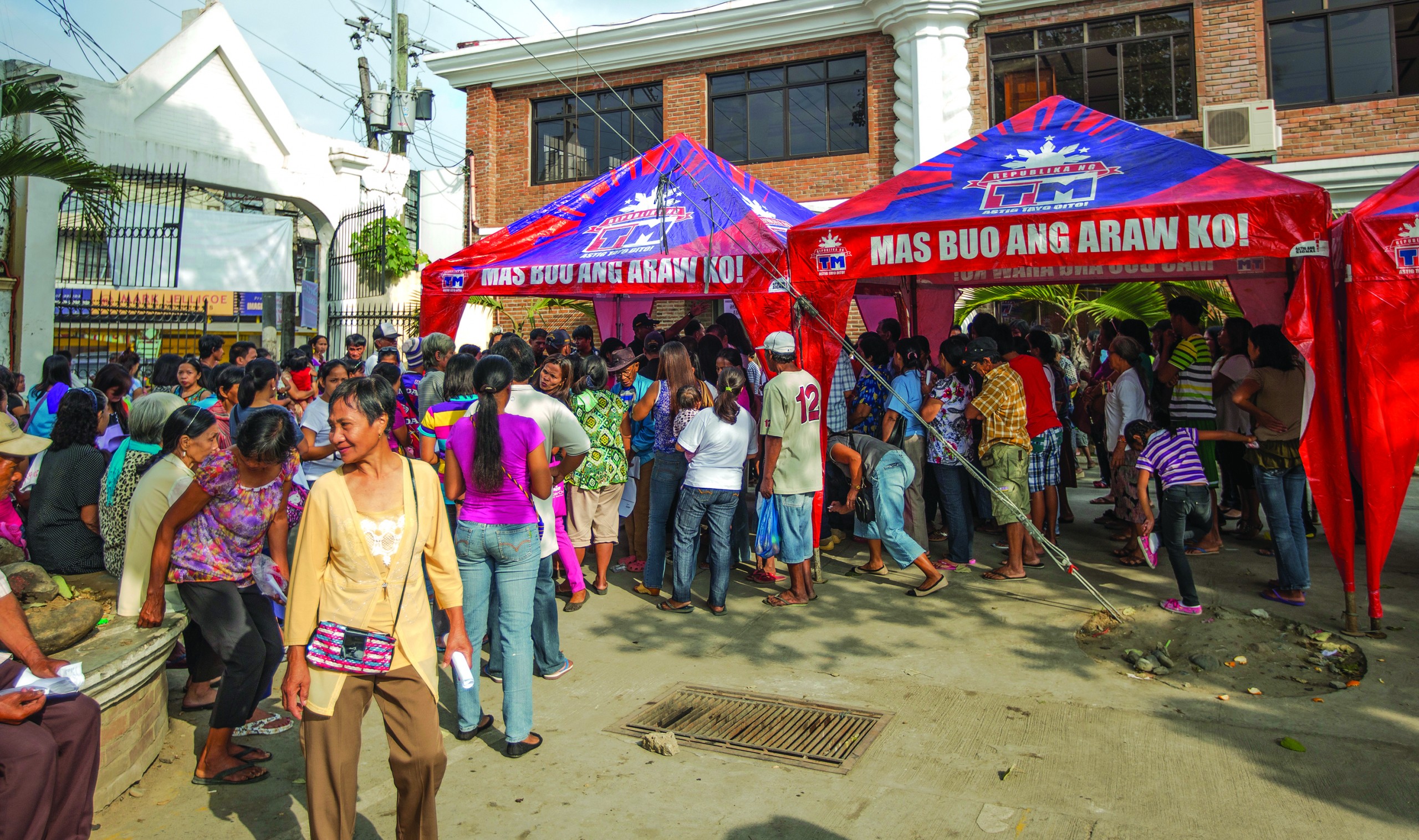
After the doors opened, the parish hall quickly filled up with people of all ages. In one corner, a woman clenched a rosary between her fingers as Dr. Jesse Navarrete, a dentist from Ewa Beach who works at the Kalihi-Palama Health Center (photo below center), carefully extracted a stubborn cavity using only simple dental equipment. He sometimes resorted to a flashlight app from a cell phone when the light from the window wasn’t enough.
Tiny packets of drugs and supplements, laboriously assembled during hours of work by the volunteers in their hotel rooms, were quickly distributed. Among the recipients was a 21-year-old mother who brought her two daughters for a checkup and free multivitamins.

RN Lolita Ching is a busy woman: She is the co-owner of Waipahu-based Quality Case Management, a lieutenant colonel in the U.S. Army Reserve, an Iraq veteran and a member of the Aloha Medical Mission’s board. She was not surprised by the chaos of the first day in Tuguegarao because she has volunteered overseas with AMM since 1992.
“The first day you don’t know what your role is. You don’t know what to expect with the locals and they don’t know what to expect from you,” she said.
But by the second day, the mission has found a rhythm and work proceeds efficiently. Across the street from the parish hall is the vivid green Tuguegarao City People’s General Hospital (shown above), where local doctors and nurses who volunteered their time worked effectively with the AMM volunteers.
Though they treated hundreds of people as efficiently as possible, volunteers still connected personally with many of them. Heather Postema, a registered nurse at Pali Momi Medical Center and a first-time volunteer with AMM, grew particularly fond of a little boy recovering from surgery. Postema gave the child her treasured rosary, a gift from her grandmother. “I just can’t grasp the concept that you can be sick and if you don’t have money they’ll turn you away. I just can’t,” Postema said about everyday healthcare in the Philippines.
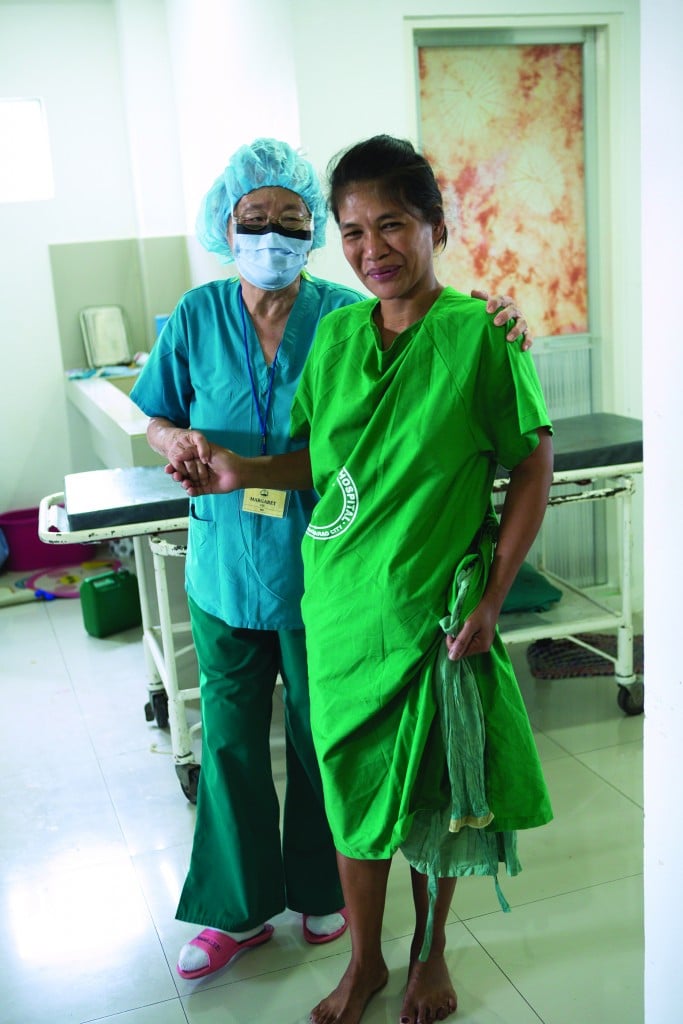
Krisensha Ramos, the woman with the tumor on her back, stands after successful surgery to remove her lipoma. With Ramos is her surgeon, Dr. Yeu-Tsu Margaret Lee of Oahu, who is still wearing her surgical mask.
After one exhausting day of surgeries and treatments, most of the volunteers were at their hotel down the street from the hospital and thinking about dinner. That’s when the call went out that there was an emergency Caesarean section. Aileen Banatao, her baby breech with feet first, was whisked into the operating room. Twenty people joined her, including both local and AMM volunteers. The hospital’s ob-gyn surgeon, Dr. Mildred Banatao, silenced the crowd and led a prayer before surgery. (Yes, patient and surgeon share the same name but are not related.)
Everyone watched silently as the doctor made the incision and the operating team worked together. Within minutes, the silent baby was pulled from his mother’s body, feet first. Everyone held their breath as the doctors wiped the baby clean. Finally, a cry from the child ignited cheers from everyone while cameras flashed.
The event was especially emotional for the mission’s youngest volunteer, Jamie Hattler, a high school student from Palo Alto, Calif., who had no regrets about missing two weekends and four days of school to help. “I didn’t think they would let me watch and hold the baby. I’m just a random person who’s 16,” Hattler said. “I got to hold him for like 10 minutes.”
The baby’s mother revealed that had it not been for the mission, she and her husband would have been forced to sell their family’s water buffalo to pay for the operation. The baby was named Khing Keano Banatao, his middle name inspired by the Hawaiian name “Keanu,” in honor of the Hawaii-based Aloha Medical Mission. “The Aloha Medical Mission Baby” reinvigorated the volunteers for the rest of their mission and probably for a long time after that.
Lifeline from Hawaii
Aloha Medical Mission has been providing surgery to poor people throughout Asia and the Pacific.
BY ALDEN ALAYVILLA
In America, a hernia operation might cost a patient or his insurance company $15,000. In the Philippines, the price could be a lot less, $500 to $1,000. But everything is relative, says Dr. Bradley Wong.
“A farmer who makes $250 a year can’t afford surgery,” he says. “There’s no way.”
That’s why the work of the Aloha Medical Mission is so valuable, says Wong, who is chairman of the Hawaii nonprofit.
Now in its 24th year, AMM has healed bodies and saved lives in the Philippines and 15 other developing countries, including Bangladesh, Myanmar, Cambodia and Micronesia. On 142 overseas trips, AMM says, its volunteer doctors, dentists, nurses and other providers have performed more than 21,000 surgeries for free and have helped more than 10,000 patients.
Wong vividly remembers a little boy from Nepal who had bad burns on his arm. When burns heal without treatment, Wong says, the skin sticks together and this boy’s shoulder and elbow were frozen against his chest.
“The (plastic) surgeon who was with us conducted the operation,” Wong recalls from the mission two years ago. “It was a bloody operation. Most of us don’t think these kinds of surgeries go very well. Even the plastic surgeon thought the chances of a successful surgery were very small – maybe they’d get partial movement back. On our recent mission to Nepal, this kid shows up with his father and he was 100 percent recovered, raising his arm up, clapping.”
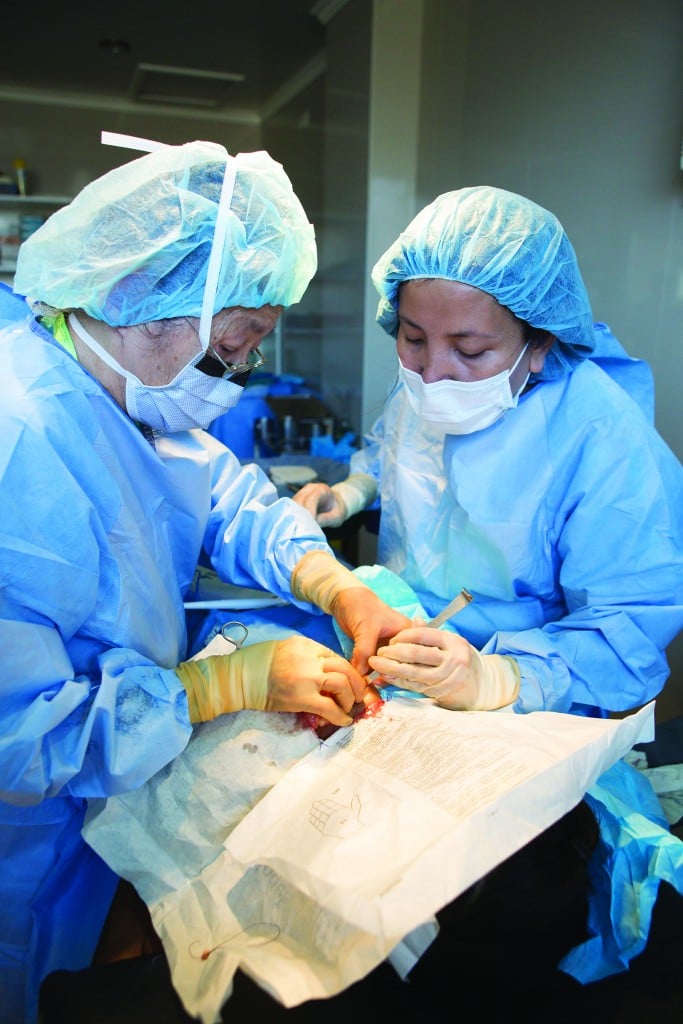
Over the years, there have been more than 4,600 AMM volunteers and all of them not only donated their time, they paid for their own airfares, food and lodging. Among them are those whom Wong calls “mission addicts.”
“They realize how good it makes them feel. I take 35 people. Of that 35, 10 or 12 have been on missions with me four or five times.”
There are both medical and nonmedical volunteers. “Everyone in our group takes nonmedical, lay people,” Wong says. “They help in the medical room, they clean instruments, wash the gowns, etc. They’re just as essential as the medical volunteers. We really need them.”
In the beginning, nearly everyone was from Hawaii. Now, half of the average crew are from the mainland.
“People come with us and, if they can, bring friends. Word spreads. It’s no longer just a Hawaii-based group. Aloha Medical Mission provides the opportunity for people to do good things. That’s a very powerful vehicle.”
Fundraising events raise money for administrative costs and medical supplies.
Dr. Lisa Grininger, a surgeon at Kaiser Permanente on Oahu, has been volunteering with AMM for 20 years and she says every mission is different, depending on the location and the volunteers who come along.
“A lot of the benefit for us on the mission is you get a really intimate view of the people and the culture, and working together is a really good experience,” Grininger says. “The patients are always very grateful.”
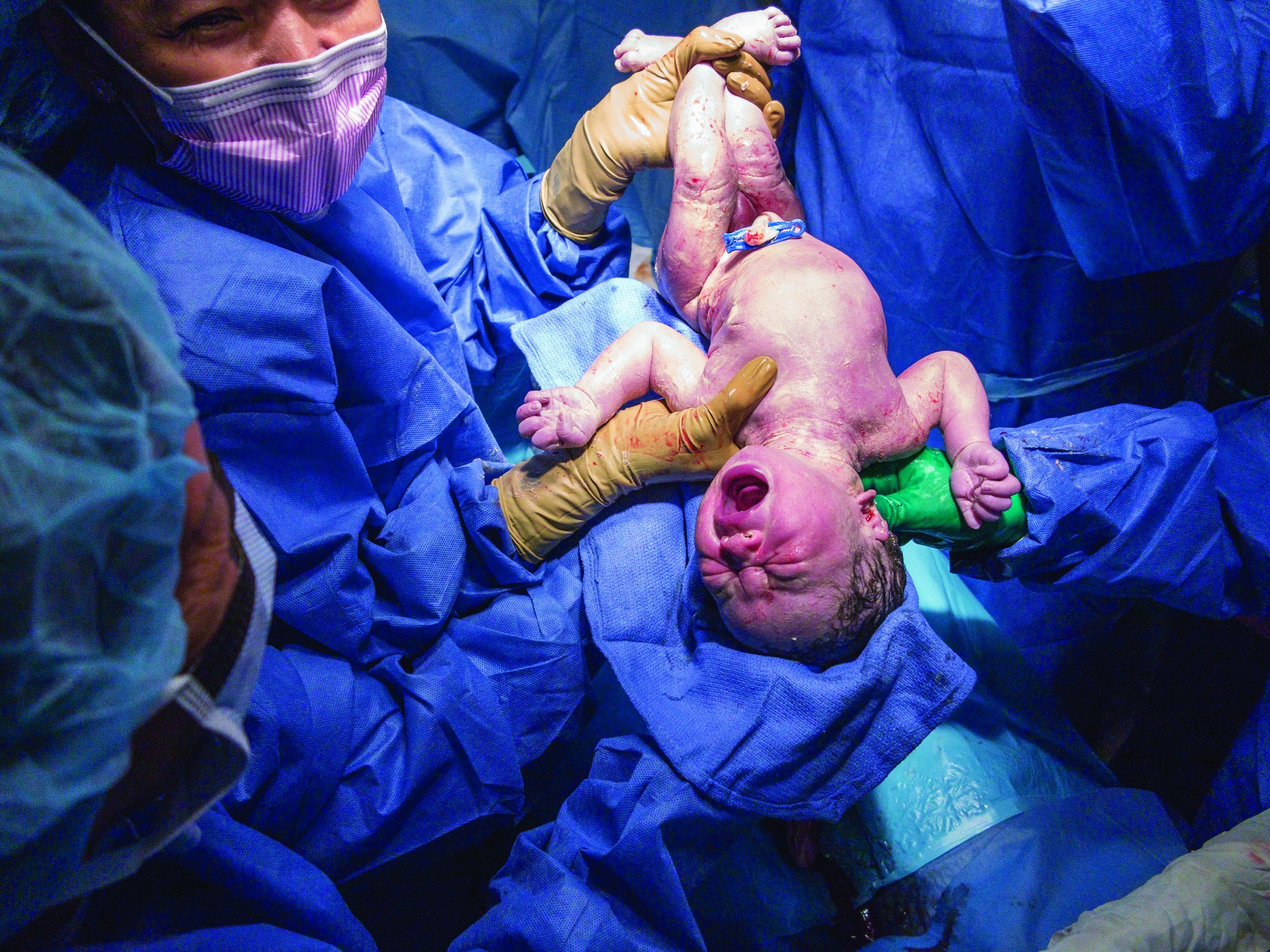
Lifeline for Hawaii
Less well known than Aloha Medical Mission’s overseas trips are its free dental services in Hawaii. For 12 years, AMM has run the only full-time free dental clinic in the Islands, which is located at the Palama Settlement in Kalihi. Each month, volunteers see about 170 patients who have no dental insurance.
AMM’s chairman, Dr. Bradley Wong, says one-third of Hawaii’s adult population has no dental insurance.
“If you have an acute toothache, a problem, an abscess, an infection, sometimes you’ll get into the community health centers, but many times you won’t,” Wong says. “You’ll go to the emergency room and they won’t take care of your tooth. We’re looking for patients to come and see us.”
The Aloha Medical Mission team in Tuguegarao was comprised of 28 volunteers from Hawaii and the U.S. mainland:
- Seven physicians,
- Seven nurses,
- One dentist
- One pharmacist
- One respiratory therapist
- Eight nonmedical volunteers
- Three journalists
The local volunteers from Tuguegarao included 24 physicians, 16 nurses and three dentists.
Nonmedical volunteers were vital: They prepared and comforted patients, helped during surgery, cleaned instruments and played many other roles.
Web Exclusive
Presented below is a web video produced by Deborah Manog and Bobby Bergonio and exclusive photos by David Croxford.
One of the predominant modes of transportation in the city of Tuguegarao is the small (less than 150cc) scooter. Hardly anyone wears a helmet and the drivers often carry more than one passenger. These scooters are often owned by individuals who offer transportation services for a few pesos.
Wires pepper the skyline on a side street in Tuguegarao.
A doctor examines a young girl whose left ear is badly deformed. The child’s earlobe was non-existent and created what the doctor called “bone hearing,” a condition where sound vibrates on the ear and creates muffled sounds that the patient learns to adapt to.
Dr. Becky Sawai (right) removes a fist-sized lipoma from the right hip of a man who came to the free clinic. A local anesthetic, lidocaine, was given and the patient was awake during the procedure. He was sent home with minor pain medication immediately following the operation.
Surgical instruments at the ready during an evening procedure. The Aloha Medical Mission team doctors were on rounds at 7 a.m. and often operated until 8 p.m. during the week-long mission.
Doctors made the rounds every morning around 7 a.m., including checking in on patients whose procedures necessitated an overnight stay.
Unlike the equipment found in U.S. hospitals, the instruments in the Philippines can be old and in need of repair. In this photo, an OR nurse from the hospital stands on a stool to reach and hold the OR lamp in the right spot to aid the Aloha Medical Mission surgeons.
The “unicorn child” was one patient who came to the screening. She is 5 years old and the growth between her eyes has penetrated the cranial area, causing learning and speech disabilities. Pediatric doctors from Aloha Medical Mission will seek assistance from fellowships within the U.S. to try and resolve this young girl’s condition and provide a more satisfying existence. If help can be found, often the parents and child be brought to the U.S. for medical procedures and expenses are cared for by the fellowship.
For every mission, the doctors must procure the necessary drugs. Dental lidocaine was necessary and purhased through legitimate pharmaceutical suppliers in Tuguearao.
Initially, the father of the young girl was afraid for his daughter’s condition and it took some convincing on her behalf that all would be well. Aloha Medical Mission nurse Lolita Ching, far right, counsulted with the family.
As the day develops, operations are listed to keep the Aloha Medical Mission team of doctors and nurses apprised of their tasks. This is from the second day on site.
Aloha Medical Mission surgeons and Tuguegarao anesthesiologist in a lighter moment between surgeries. From left to right: Dr. Ed, the anestheiologist, Dr. Lisa Grininger, Dr. Becky Sawai, Dr. Margaret Lee and Dr. Amy.
The entire team of Aloha Medical Mission doctors, nurses and support staff me with the Rotary Club of Cagayan Valley. The partnership made the mission a success.
A local gynaecologist and Dr. Lisa Grininger discuss techniques during a break.
In the foreground, a waiting pediatric patient watches through a glass window while child patients are assessed. Dr. Maggie Smead from the San Francisco Bay area can be seen through the glass, on the right.

